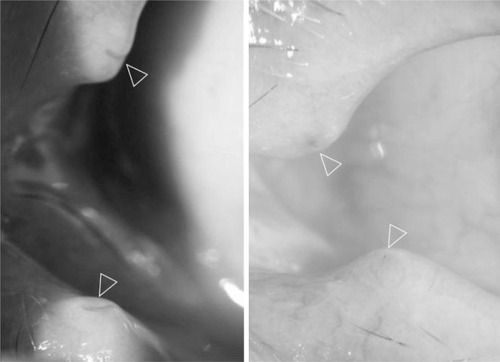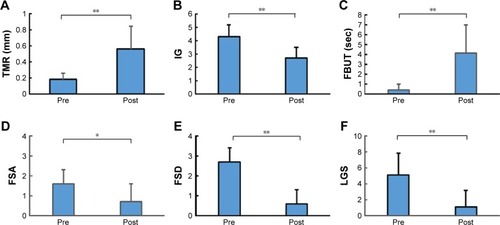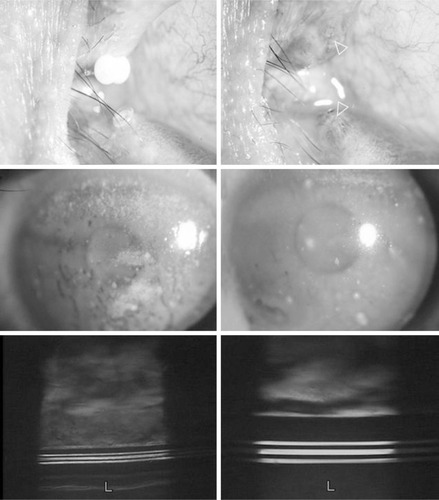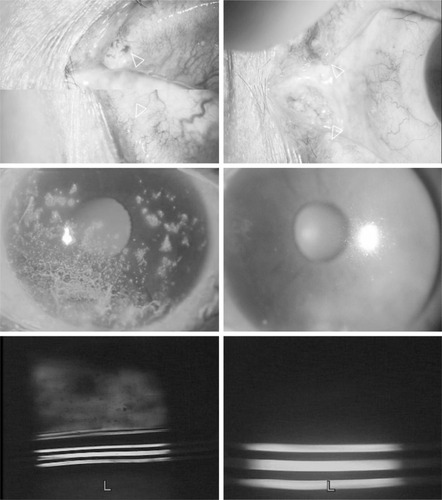Figures & data
Table 1 Data summary of the 12 patients who underwent our newly developed surgical method for punctal occlusion
Figure 1 Surgical steps of our newly developed punctal occlusion method ([A]. schematic diagram, [B]. surgical photo).
![Figure 1 Surgical steps of our newly developed punctal occlusion method ([A]. schematic diagram, [B]. surgical photo).](/cms/asset/edabe125-ac92-4dd7-87f3-f5bc1304108a/doph_a_155209_f0001_b.jpg)
Figure 2 Representative case in which puncta are clearly visible (Case 12 in ).

Figure 3 Changes in ocular parameters pre and post surgery.

Figure 4 Representative case (Case 5 in ).

Figure 5 Representative case (Case 7 in ).

